Working to cook up the good life ship ’n’ shore
The Boston Globe - Sunday, August 22, 2010
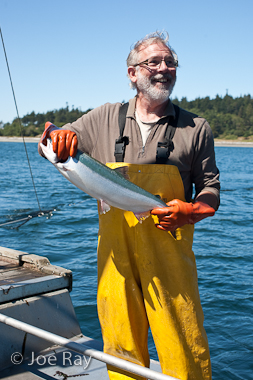
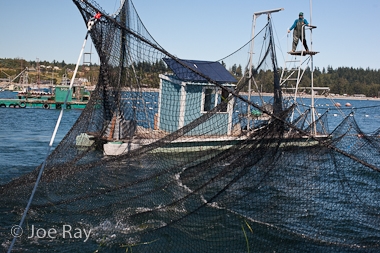
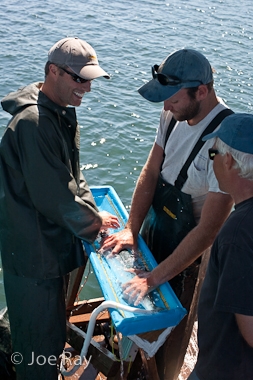
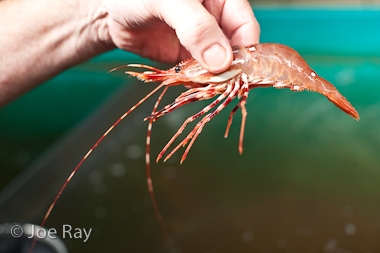
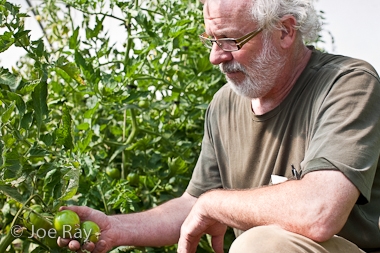
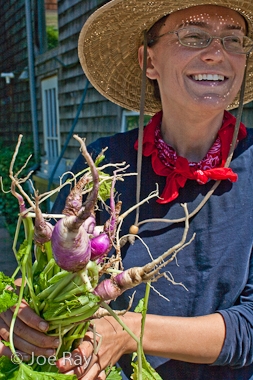
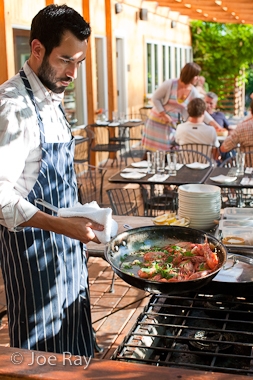
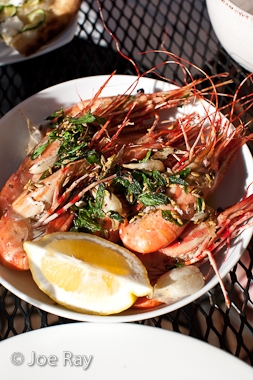
LUMMI ISLAND, WA — On the deck, in the sun, with the juice of local prawns dribbling down our chins, my dining partner lets out a discreet little moan. This is the moment I know that Riley Starks is onto a good thing.
Starks, 60, is a fisherman, farmer, and owner with his partner, Judy Olsen, of the Willows Inn on this under-discovered island.
“They are probably three of the hardest ways to make a living,’’ Starks jokes, but on the inn’s deck, where those three elements come together at dinner, you understand how and why he has aligned these stars.
A two-hour drive, five-minute ferry ride, and a world away from Seattle, Lummi Island is a place unto itself where the first thing we hear stepping off the boat is a resident explaining to a visitor why people don’t bother locking their houses. Life here is lived locally and admirably — the good life sans chichi.
Starks and Olsen fit this mold perfectly and moments after we’ve met, he opens a cooler next to the kitchen and pulls out a few spot prawns, fat crustaceans he keeps alive until the moment before they’re cooked.
“Where do you catch them,’’ I ask.
“Out there,’’ he says, with a gesture toward the open water of Puget Sound in front of the inn. And that, in a nutshell, is how Starks, Olsen, and the inn work. Between the salmon fishing he does, the prawns and lamb he buys from neighbors, and the farm they run, they can supply up to 85 percent of what they use in the kitchen. With sustainable fishing, eco-friendly farming, a beautiful B&B, and a fantastic restaurant, there’s a mix of what they want, what they need, and what’s good for the planet.
Using an aluminum tender to get out to the fishing boats, Starks taps the small, red plastic gas can with his toe. “This is the only fossil fuel we use for fishing,’’ he says. Instead, the fish come to him.
Understanding begins on the gear: a pair of bare-bones boats, anchored with an elaborate net strewn between them for a process called reef netting. It is a rig that dates hundreds of years to the Coast Salish Indians but seems borrowed from the “Waterworld’’ set. Hundreds of feet of ropes with blue plastic streamers leading to the sea floor in front of the boats guide the fish toward the net, and at the bow of each boat, lookouts on towers watch for the fish. Each of Starks’s gear boats uses solar panels that power the winches when the show starts.
“Everyone else brings two 100-pound batteries into shore every other day,’’ he says, pointing out the seven other gears here in Legoe Bay.
Heading north by instinct and pushed against the island by the tidal current, salmon — sockeye every year and pinks every other — are drawn to this spot like a magnet. The mammoth forces involved in the tides work beneath our feet and the current rips through the water as if the sound is part of British Columbia’s Fraser River, where these fish are heading to spawn.
Then the show starts. “Here they come!’’ calls a spotter and everything happens at once.
Sockeye, with their blue-green backs, appear on the surface between the boats, heading toward the nets, creating a floating, dreamlike effect seen from above. Everyone scrambles and winches scream, putting enormous strain on the ropes that tighten the net, while roughly jerking the boats.
As the net rises, the surface water whips to a frenzy as more than a dozen fish are forced to the surface and funneled into the live well, or holding tank. On Riley’s gear it is a rectangular hole directly above the water in the deck of one boat. There’s a small net below it to keep the fish alive and contained.
On this day, however, they are not destined for Starks’s kitchen. Instead, they are being tagged and released by Nanaimo, B.C., fisheries biologist Jason Smith, who works for LGL Limited, a group contracted by the Pacific Salmon Commission and the Fraser Salmon and Watersheds Program.
The fish are held in the live well until Smith nets one, sets it in a trough, plucks a scale from its side, measures its length, and crams a thumb-sized transponder into its belly. “It looks very uncomfortable,’’ Starks quips. Once the fish enters the Fraser River, the device sends dozens of unique readings that detail the life of the fish and its surroundings. Smith’s job is part of a peculiar balance between management and conservation — a sticky political business that depends on the good health of the fish.
“If you know there’s a weak stock out there, you can hold off opening fisheries to protect stock,’’ Smith says. It’s also something that despite the impressive amount of data they collect, is still fickle, still nature.
“Last year, they forecast a big year and nothing showed up,’’ he says, referring to the 2009 collapse.
It also highlights reef netting’s low impact.
“This is ideal,’’ says Smith, pointing to the live well. “The fish are in great condition. If you catch a chinook [off-limits for gear fishing] in a gill net and don’t get out to it soon enough, it’s going to die.’’
Here, they just flip them back into the drink.
This sustainability is only part of what makes Starks happy.
“My dad wanted me to be a lawyer,’’ he says. Starks got his law degree and after years of crewing on fishing boats to make college money, “I sold everything I owned and bought a boat.’’
Decked out in bright yellow bibs, a sou’wester cap, and sporting a graying beard, he looks like he should be the Bliss Marine spokesperson. He’s certainly a businessman but he’s got a smile big enough to make every office worker in the lower 48 jealous.
The grin doesn’t go away on the farm, where his crew grows impressive year-round crops on 5 1/2 acres and is organic in everything but name. (The farm was certified organic for 10 years and continues the same practices.)
“Let me show you the pig,’’ he says, ushering me toward a large fenced-in area with a giant mangalitsa, a Hungarian breed that resembles a wild boar and is prized for its polyunsaturated fat.
“Does it have a name,’’ I ask.
“Nope,’’ Starks says. “Everything’s for the plate.’’
The pig takes a few bites of grain then lumbers over to cool off in the mud.
“In general, we have three pigs every two years. We made a jamón [cured ham] with one,’’ he says, trailing off to a happy place. “I still dream of that.’’
It’s right about here when I realize I’m amazed by it all — what Starks has going, Lummi’s small-town beauty, the farmer’s market where a vendor’s spot costs two bucks. There’s a sense that on the island, this is the way things are. And were. And can stay.
What else could you need? In my case, dinner.
This is food — roasted fennel, chickpea salad, Lummi Island lamb, and Riley Starks’s salmon — where the less you fuss with it the better. This is a chef’s dream.
The best way to dine here, however, is à la carte. From May to Labor Day, the inn runs Sunday Prawns on The Deck, reason enough to make this place a destination.
While Starks tends bar - a perfectly fitting shoe - sous chef Jason Brubaker mans the prawn station. The process is simple: hot pan, hot oil, a bit of garlic, a fistful of prawns, some herbs, and a cover. Flip ’em and wait. Total cooking time? About three minutes. Plate with a lemon wedge. Eat with your fingers.
Maybe it wasn’t my partner moaning. Maybe it was me.
Follow me on Twitter: @joe_diner and on Facebook.
If You Go
The Willows Inn
2579 West Shore Drive
Lummi Island, Wash.
888-294-2620
www.willows-inn.com
Doubles from about $150, including breakfast; packages with three-course tasting meals for two, $220. Information about reef netting and how to go out on a gear can be found on the website.
Blaine Wetzel, sous chef at Copenhagen’s noma — recently named the world’s best restaurant — will take the reins as executive chef starting tomorrow. Weekdays prix fixe $30, weekends $50.
Follow me on Twitter: @joe_diner and on Facebook.